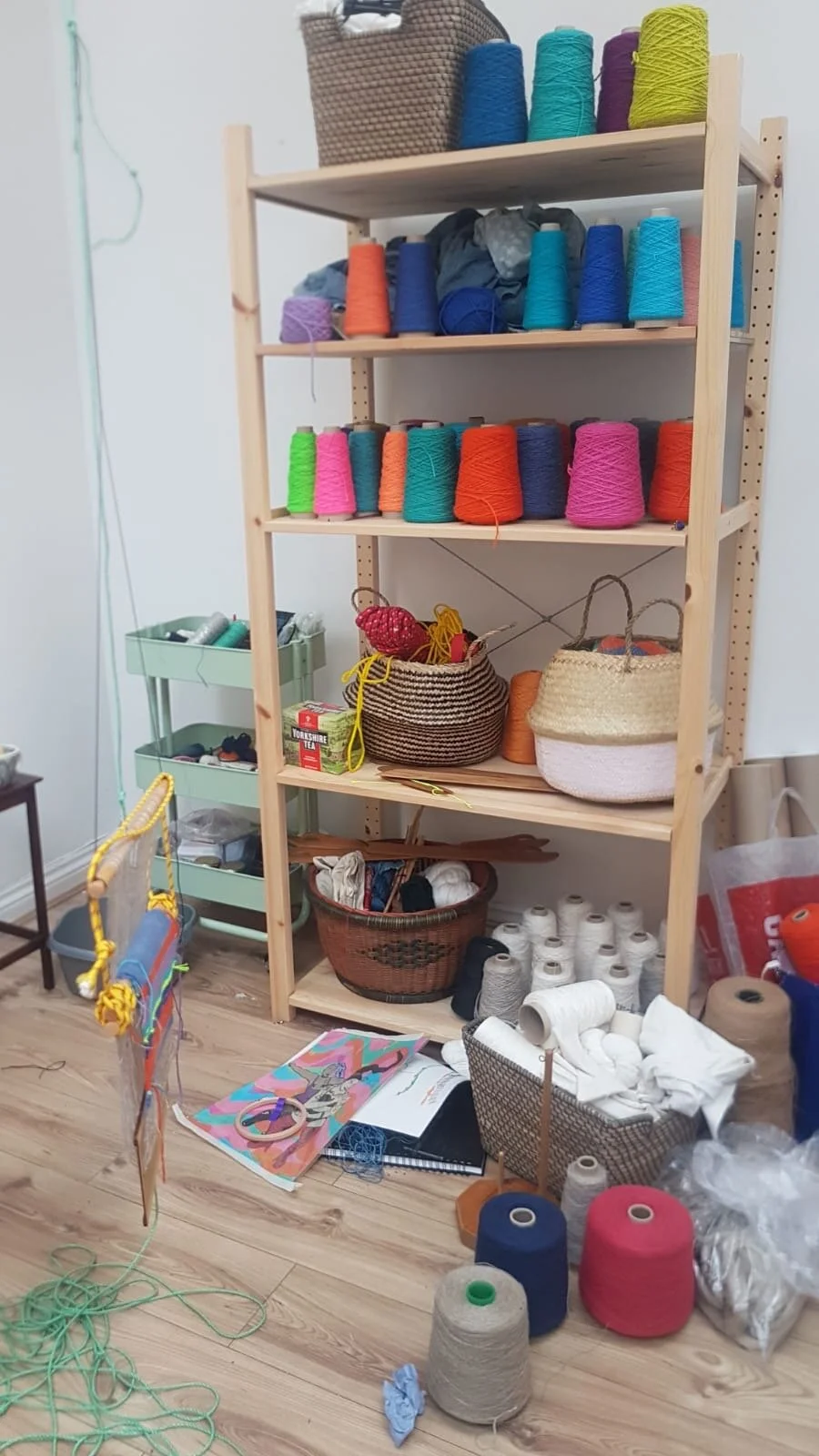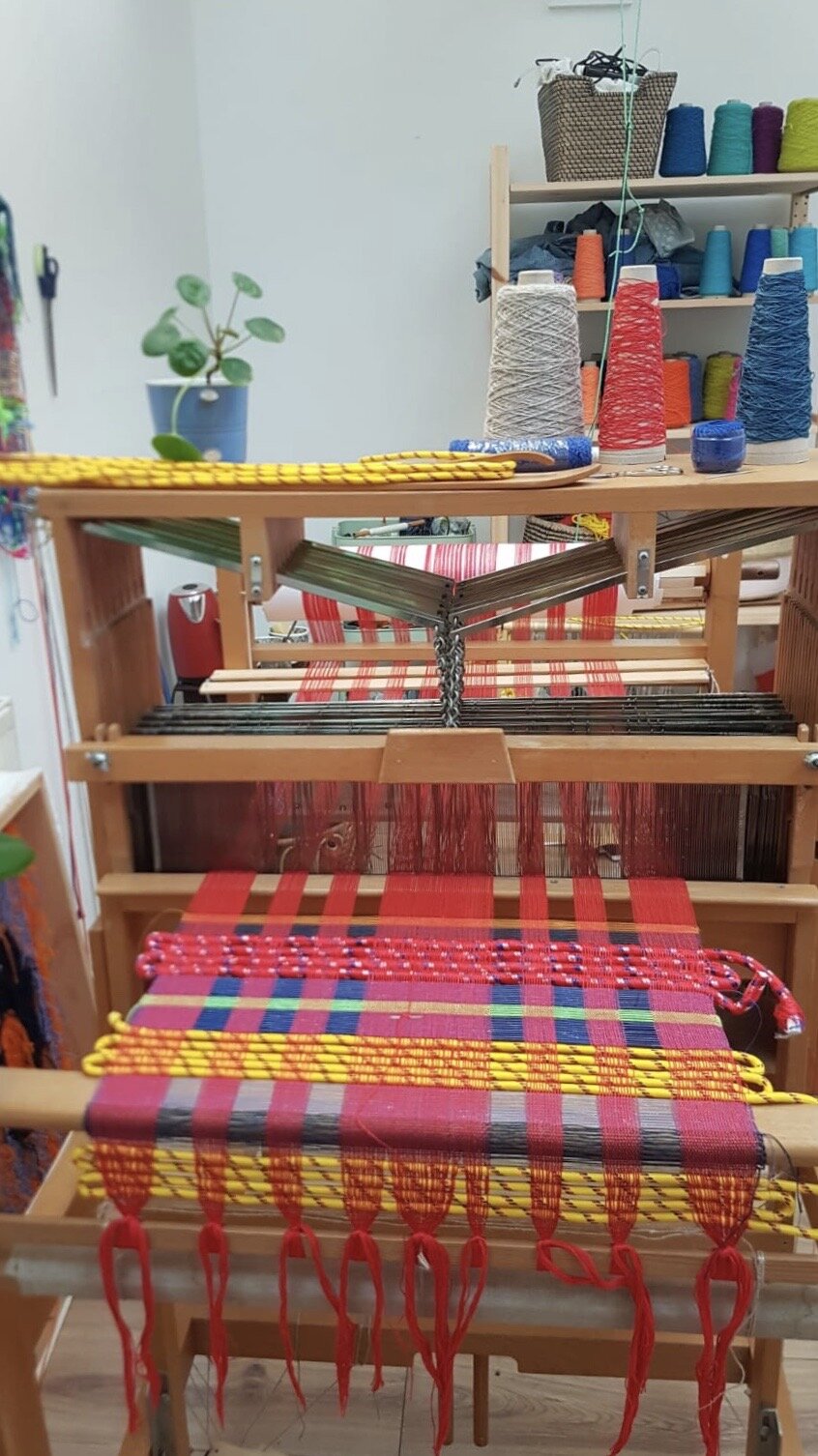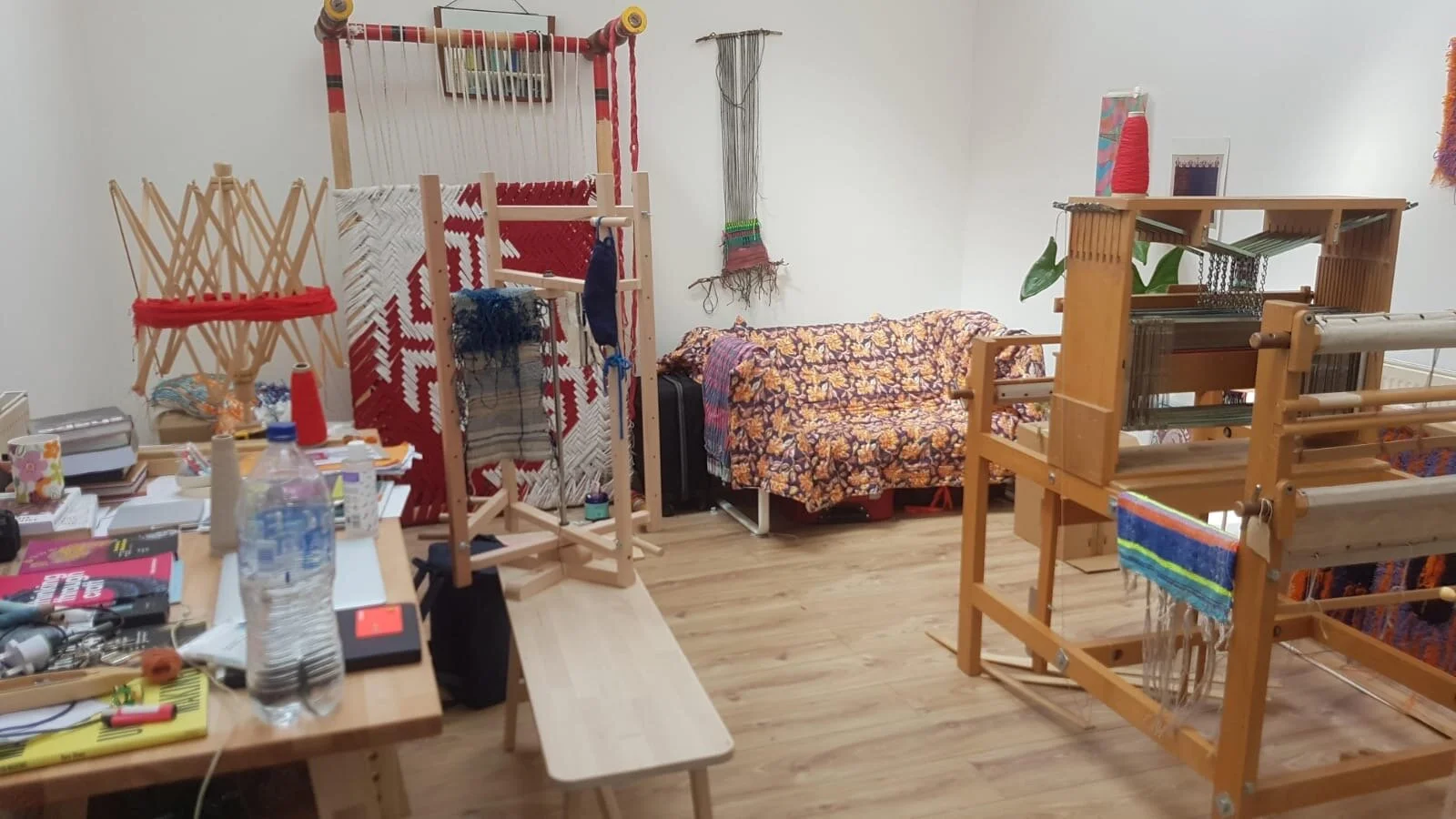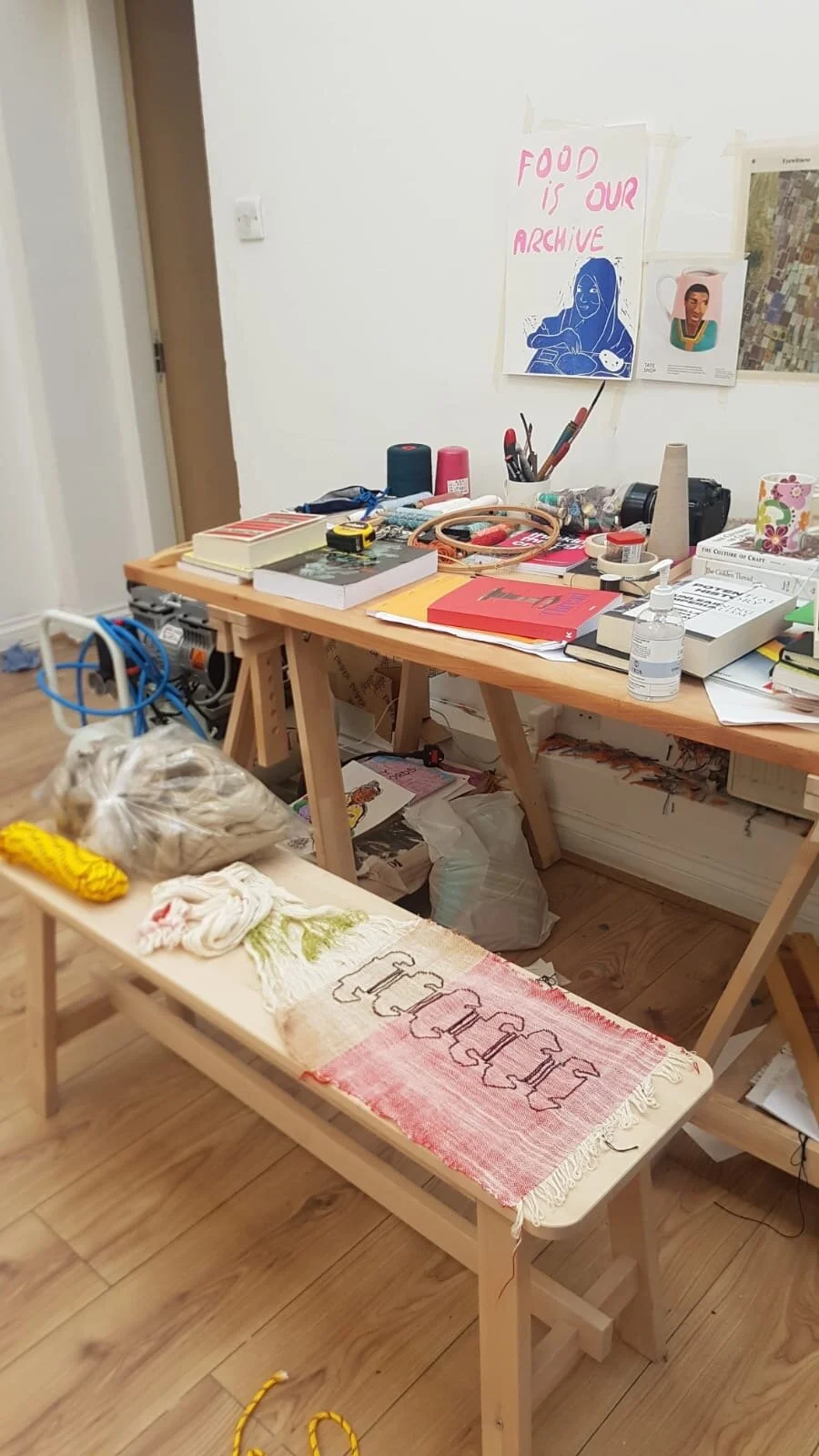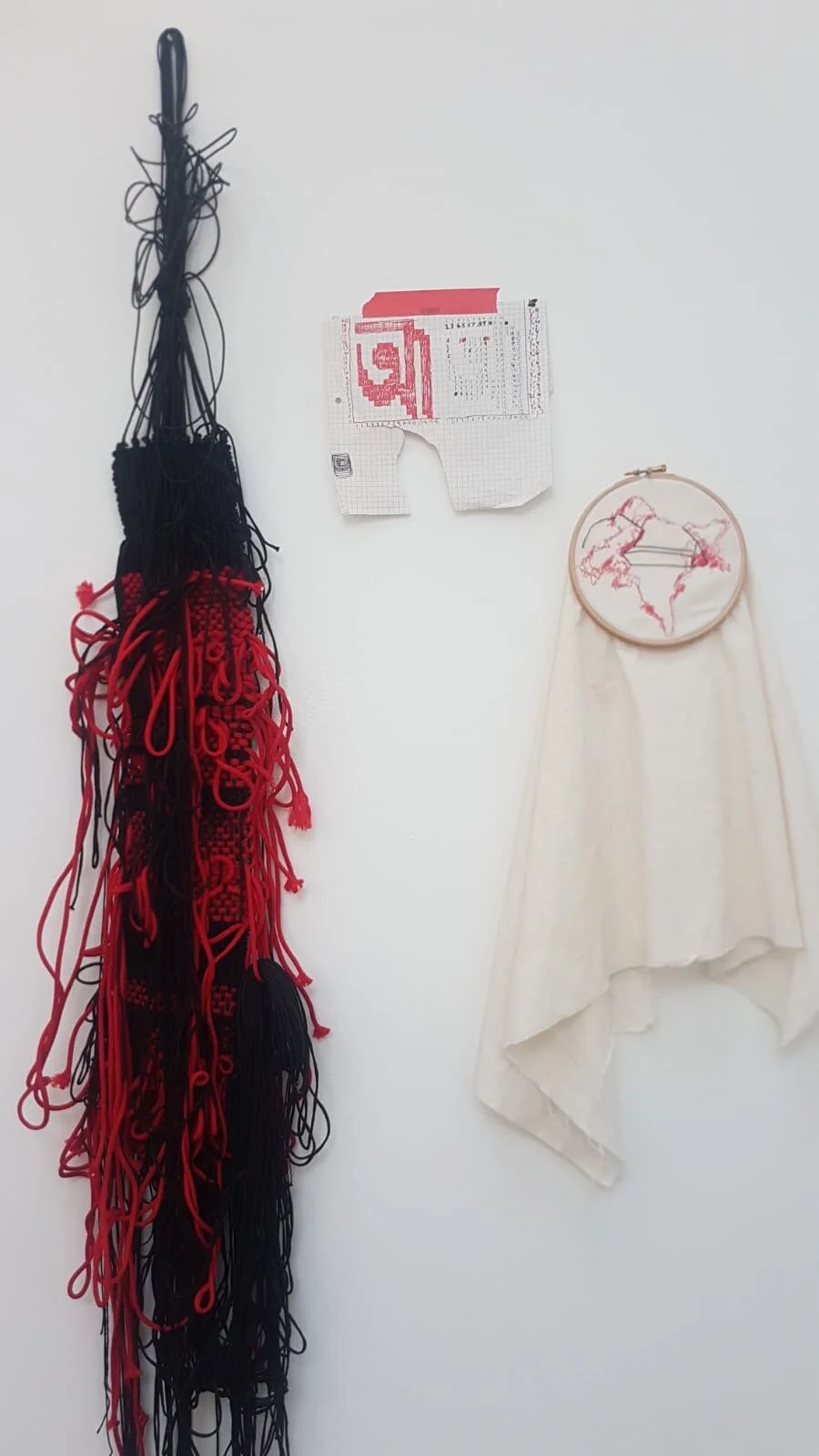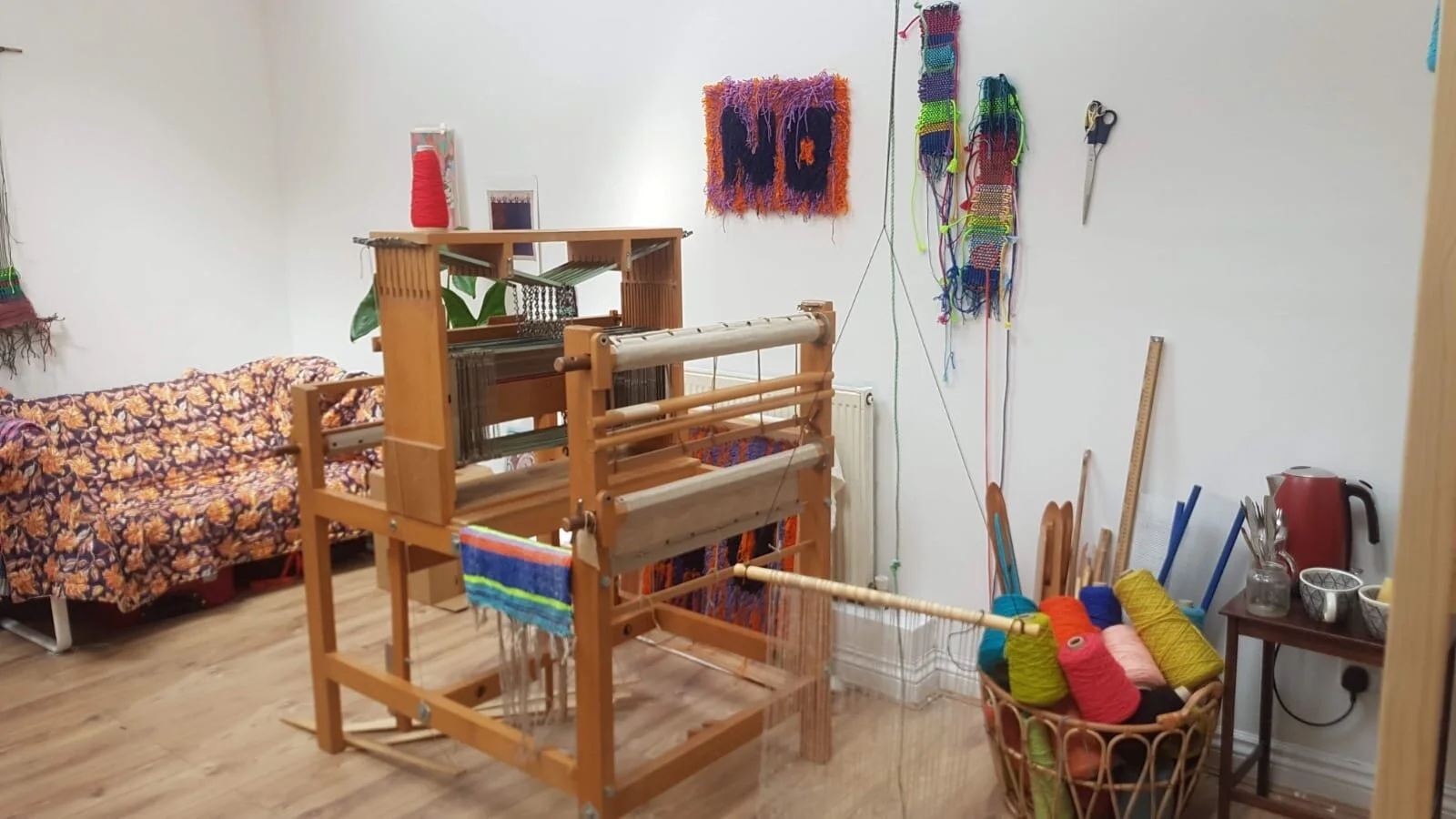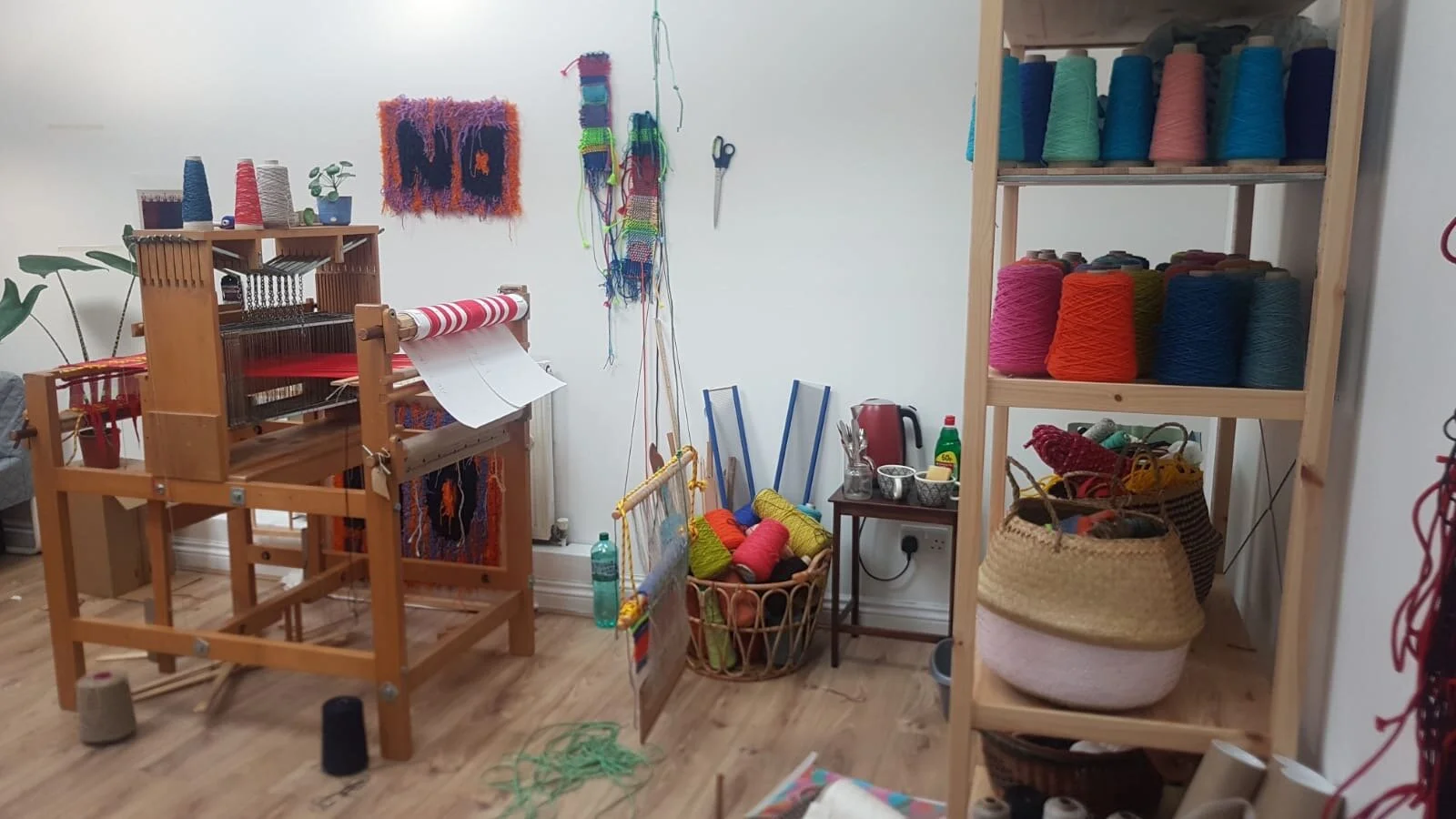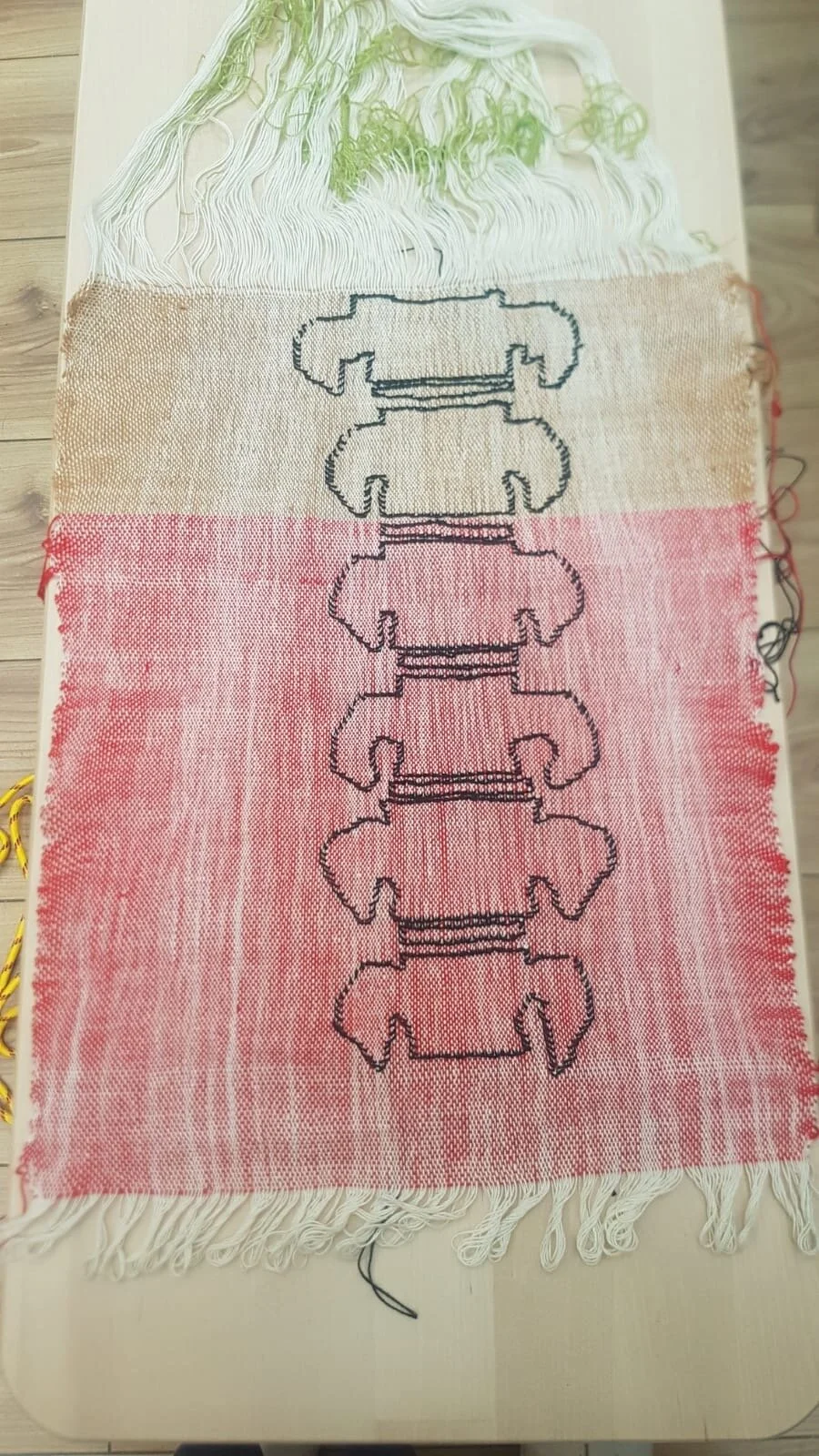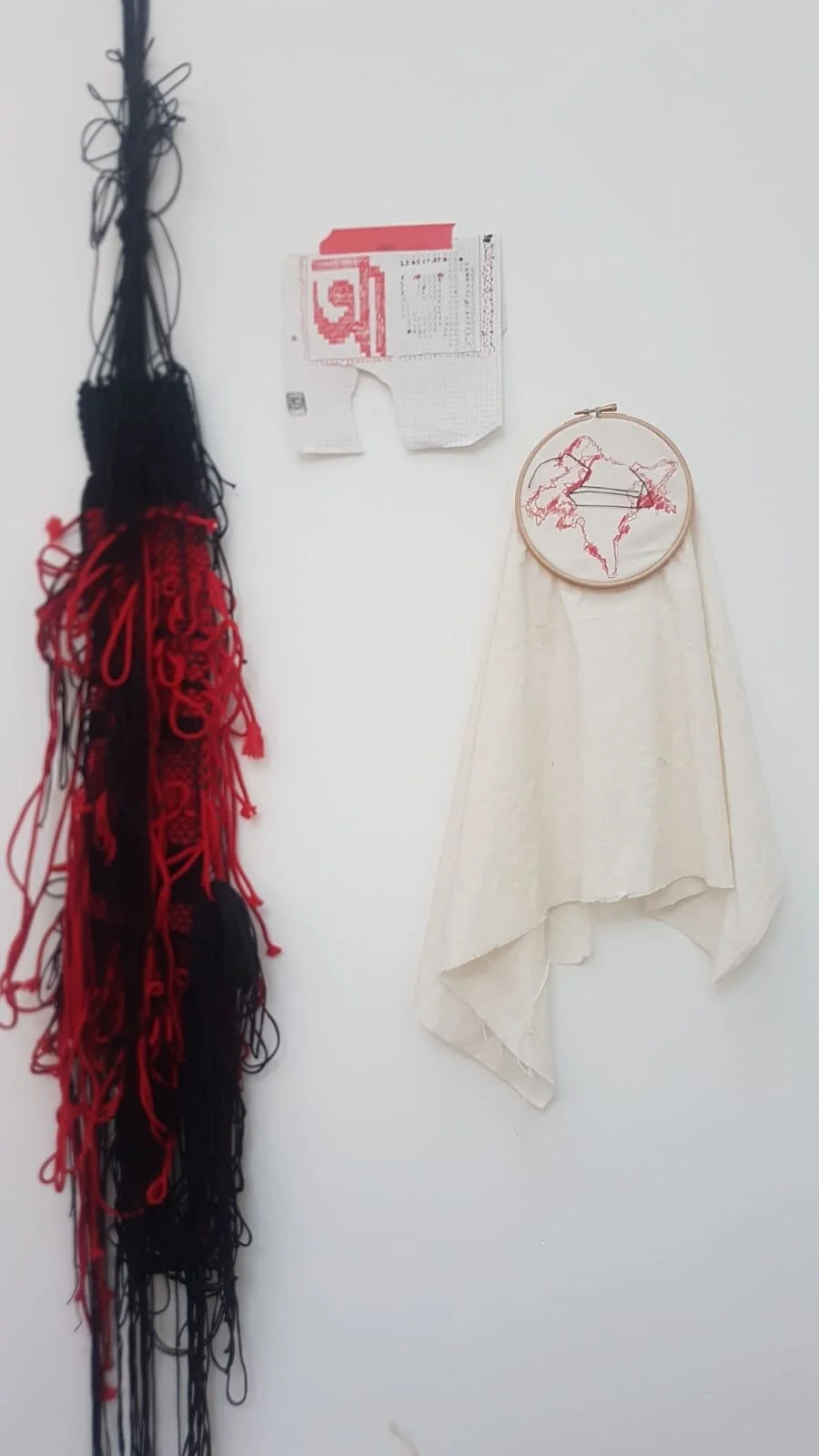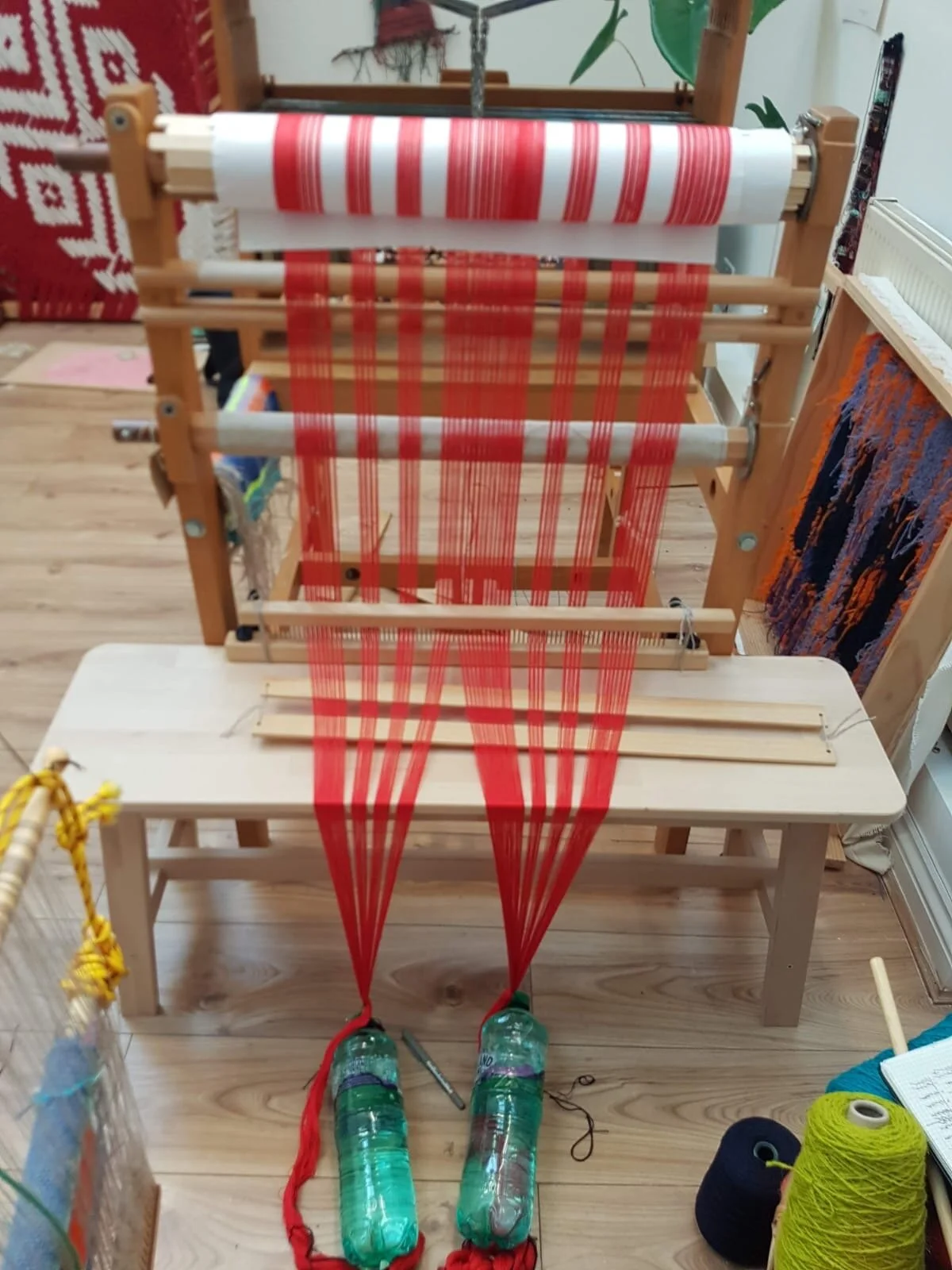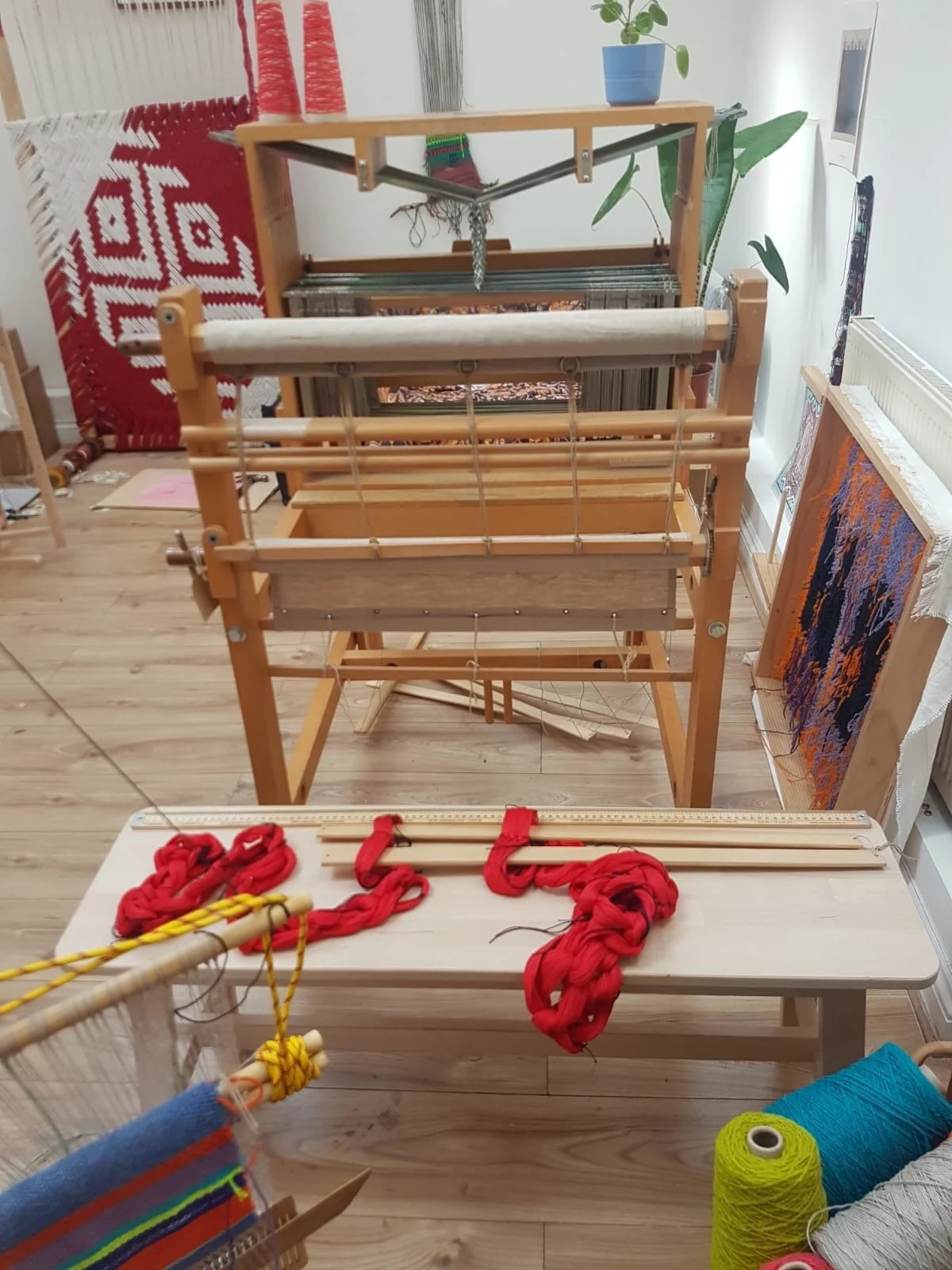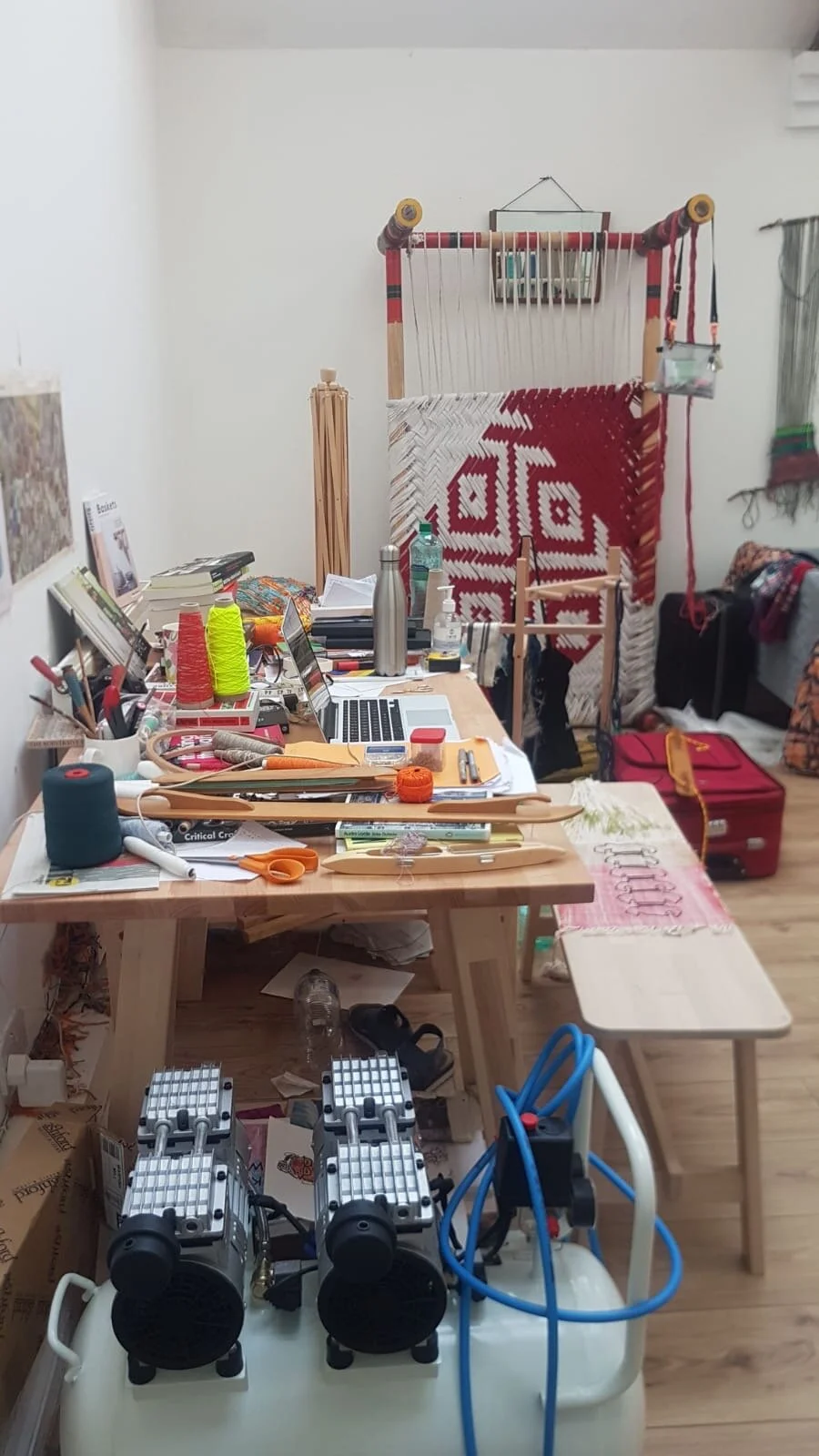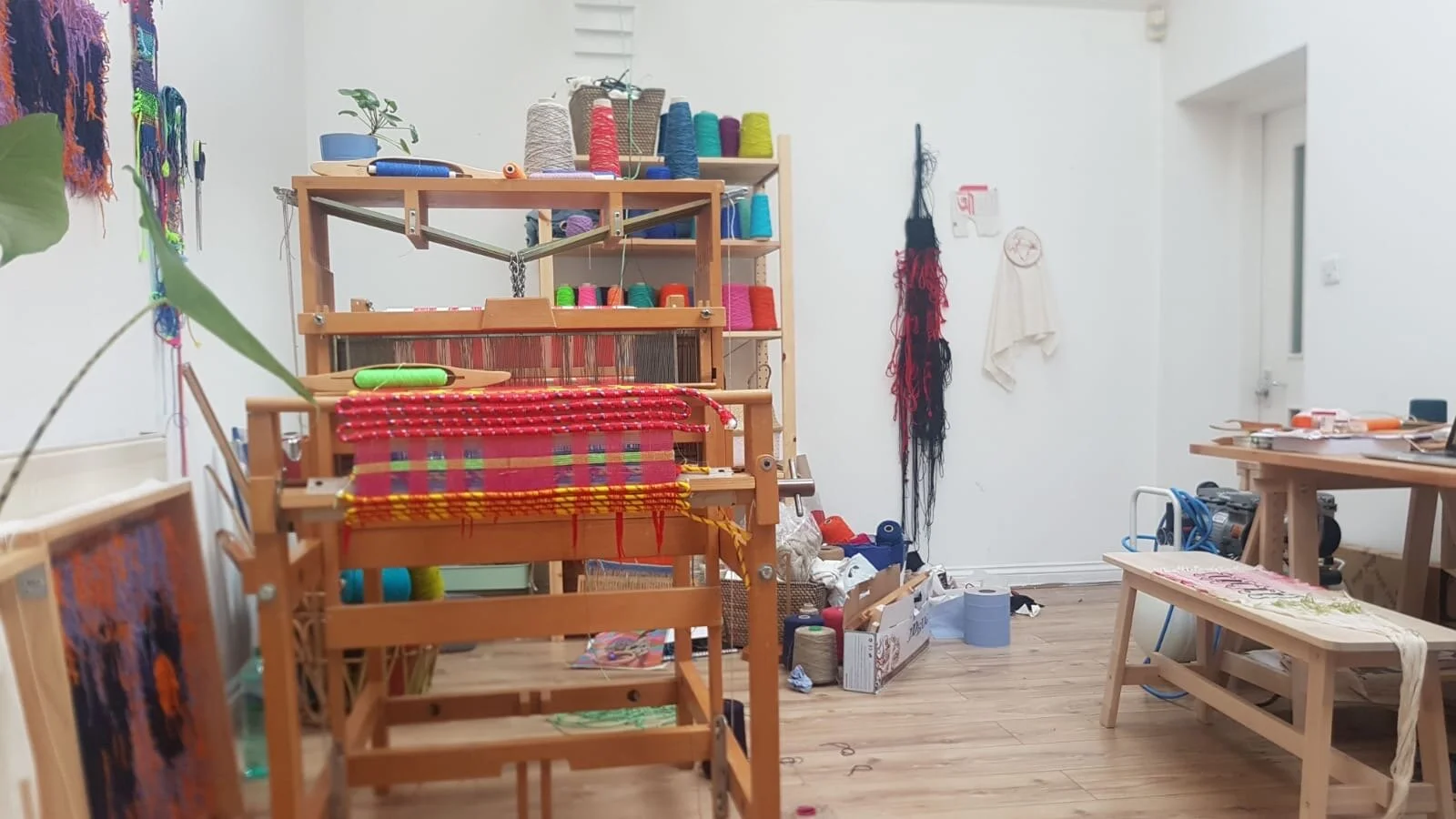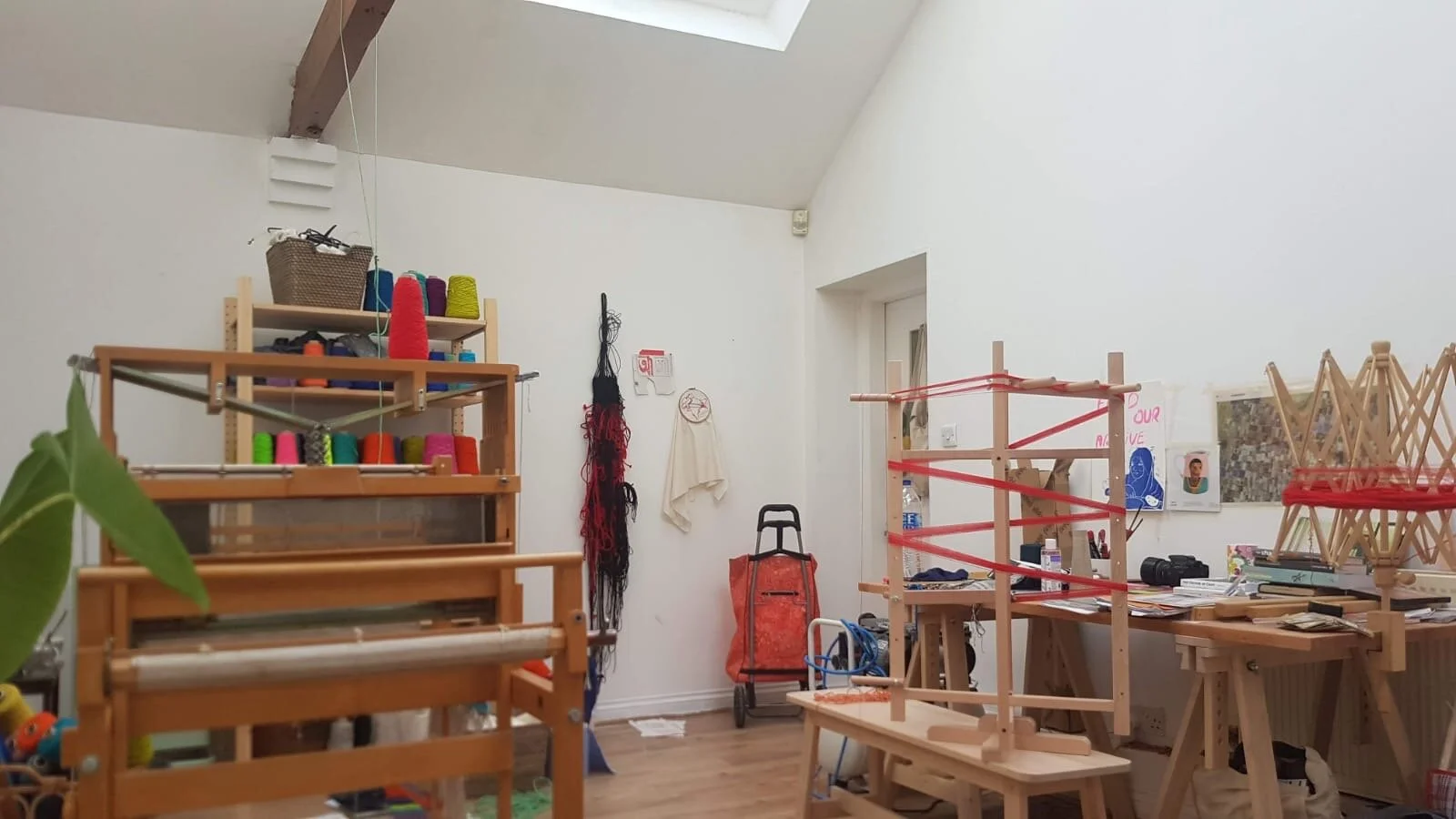Raisa Kabir: নীল. Nil. Nargis. Blue. Bring in the tide with your moon...
3 - 26 September
indigo+madder is thrilled to present Raisa Kabir’s solo exhibition নীল. Nil. Nargis. Blue. Bring in the tide with your moon…
Raisa’s interdisciplinary practice addresses cultural anxieties surrounding nationhood, textile identities and the cultivation of borders. Through her work, she examines the encoded violence in histories of labour in globalised neo-colonial textile production through her chosen mediums of woven text/textiles, sound, video and performance.
Through using weaving as a methodology for resistance, as a performative craft action in dance and diaspora, Raisa’s work re-situates the intensive labour processes of textile production to highlight the erasure of racialised and gendered labour within these connected global systems and networks.
The exhibition brings together several new and previously unseen works by Raisa. ‘Lay your heavy bones here...' after Soporte de Vasija, a backstrap textile made with indigenous Mexican cotton thread and hand spun brown cotton, features motifs inspired by the Soporte de Vasija, a vessel in the shape of vertebral columns from Oaxaca (Monte Alban II 200BC - 200AD), now in the National Museum of Anthropology, Mexico. The work, with columns interlaced into the warp and weft, draws on disability politics and material objects that are forged out of bodily labour. It explores the link between craft and exploitation and the role of the body in types of making, whether that be ceramics or textiles. Raisa highlights this role, and suggests that there is ‘an imprint left behind. A shared knowledge of a heaviness in the body. By making links between ancient makers in Mexico, the value of labour and art in museums by people of colour, the textile references the absent body or presence of the maker in crafted objects by artists of colour.’
The title of the exhibition comes from the central work নীল. Nil. Nargis. Blue. Bring in the tide with your moon…, a film installation made using footage from Raisa’s performance on the Scottish coast, where British nuclear submarine war heads are kept underwater. She used natural Bengali indigo dye, and items made from linen and jute, to weave on a backstrap loom in the sea. The performance harnessed weaving, with the unknowable depths of the sea, contrasts of violent beauty and occupied/militarized indigenous land. Through the use of natural materials such as jute, indigo and linen, the piece uncodes the historical and material connections between Scotland, Bengal and the Caribbean. The natural dye, powerfully alludes to the history of forced labour of indigo production in colonial Bengal, and the transgenerational trauma that it has inflicted in the region. Indigo farmers in nineteenth century colonial Bengal were exploited, and remained perpetually in debt, through a brutally oppressive system set up by colonial planters. In 1859, after decades of oppression and violence, the farmers started, what came to be known as the Nil Bidroha or Indigo Revolt. The history of indigo in pre-partition Bengal is also marked by the disruption of local systems of knowledge of indigo cultivation, rooted in nature, to serve an increasingly global market and enable the growth of the exploitative planter system.
The performance focuses on the complex narrative of historical trauma across generations, by intimately navigating, what Raisa describes as ‘emotional literacy and the legacies of language - rather the loss of it... asking what does it mean to be connected to our lineage when there is no language to express our emotions between generations of diaspora? The work has come out of researching indigo planter history, the aftermath of that history on the Bengali/Bangladeshi collective psyche, working on the relationship between myself and my mother, and the barriers we have in understanding each other. How there is so much trauma, she has no emotional language to be able to communicate to me, or decipher her response.’
The performance tenderly explores the watery languages of matrilineal trauma, and the attempts to find an emotional literacy, unspoken between generations and across diasporas.
Raisa Kabir (b. 1989) is an interdisciplinary artist and weaver, who utilises woven text/textiles, sound, video and performance to translate and visualise concepts concerning the politics of cloth, labour and embodied geographies. Her (un)weaving performances comment on power, production, disability and the body as a living archive of collective trauma.
Kabir has participated in residencies and exhibited work internationally at The Whitworth, The Tetley, Raven Row, Cove Park, Textile Arts Center NYC, and the Center for Craft Creativity and Design U.S. Kabir has lectured on South Asian textile cultures at Tate Modern, Institute of Contemporary Art London, London College of Fashion, The Courtauld, Royal College of Art, Manchester School of Art and Edinburgh College of Art.
Download Press Release
Short Clip: নীল. Nil. Nargis. Blue. Bring in the tide with your moon…
INSTALLATION VIEWS
SELECTED WORKS





































